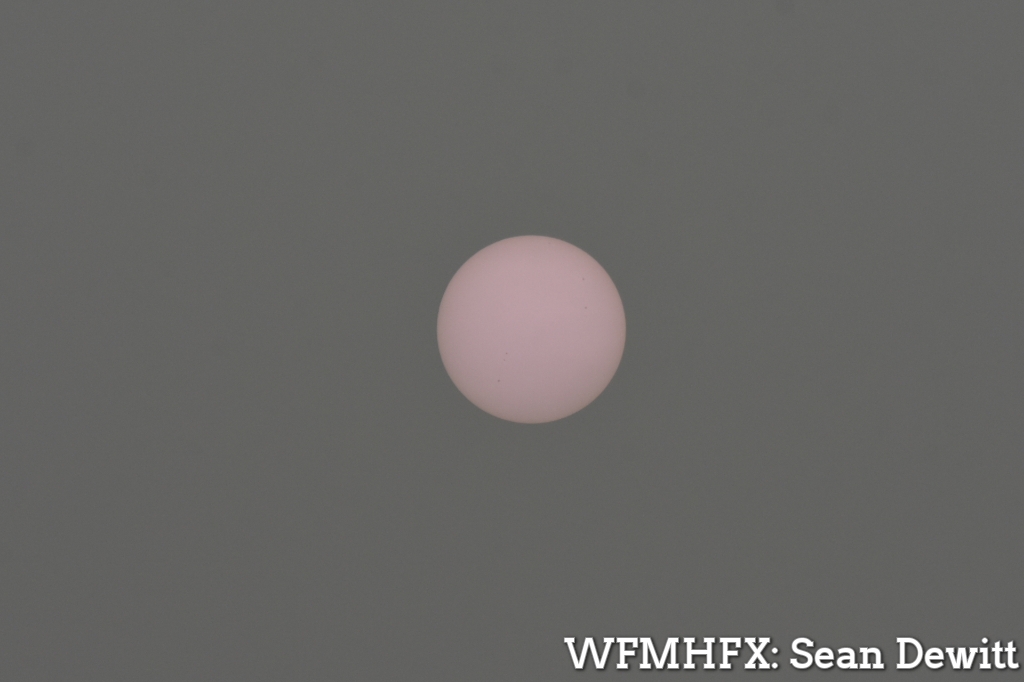**** Info via Environment Canada
Purple sun in the east
On September 27 and 28, residents across parts of the Maritimes were treated to a very strange sight: the sun appeared purple.

Amid a hazy, white sky, onlookers reported being able to look directly at the violet-tinged disc of the sun, which appeared to many as though they were looking at a full moon. The cause for such an unusual optical display was perhaps equally remarkable, originating from a few days earlier, several thousand kilometres away.
The sun appearing purple at Glace Bay, Nova Scotia on September 27. Credit: Janna Gallant.
The big burn
On Friday, September 22, warm, dry and windy conditions caused tremendous growth in wildfires burning across parts of northern Alberta and British Columbia. Based on satellite hot spot detections, estimates of area burned suggest that over 700,000 hectares burned in a single day – by far the most of any day in 2023.
With substantial wildfire burning across the northwest Canadian boreal landscape amid an already record-breaking fire season, a warm and windy autumn day was all it took to cause the massive firestorm.

Very high-intensity wildfires rage across northeastern British Columbia and northern Alberta on September 22, generating a massive smoke plume. Credit: RAMMB/CIRA.
These intense fires produced a vast plume of smoke, swiftly carried eastward over northern Canada by a powerful jet stream, and darkening skies in Greenland’s capital of Nuuk by Monday morning, September 25. By Wednesday, the pall of smoke had dispersed south into the Maritimes and east across the Atlantic into the United Kingdom, where reports of lavender-coloured suns were posted to social media.

The smoke plume as seen travelling across northern Canada toward Greenland, and then down into the Atlantic provinces. Images are displayed once per day between September 22 and September 27. Credit: NASA.
Why purple?
A significant concentration of uniformly-sized minuscule particles must be suspended high in the air for the sun or moon to appear purple. This phenomenon typically happens after several days within a dense smoke plume, after larger particles have had time to settle. Once remaining particles are of a specific size, they scatter the longer wavelengths of visible light, such as reds and greens, while allowing the shorter wavelength blues and purples to dominate the scene.
Widespread reports of purple and blue suns and moons have only been reported on two other occasions since the 19th century – in 1883, following the eruption of Krakatoa, and in a very similar wildfire event in 1950 called the “Chinchaga Firestorm.” As it turns out, at around the same time in September, a late-season firestorm in nearly the same region of Canada generated a massive smoke plume that caused day to become like night in southern Ontario two days later. Following this, reports of blue and purple suns and moons emerged across eastern North America and western Europe.



